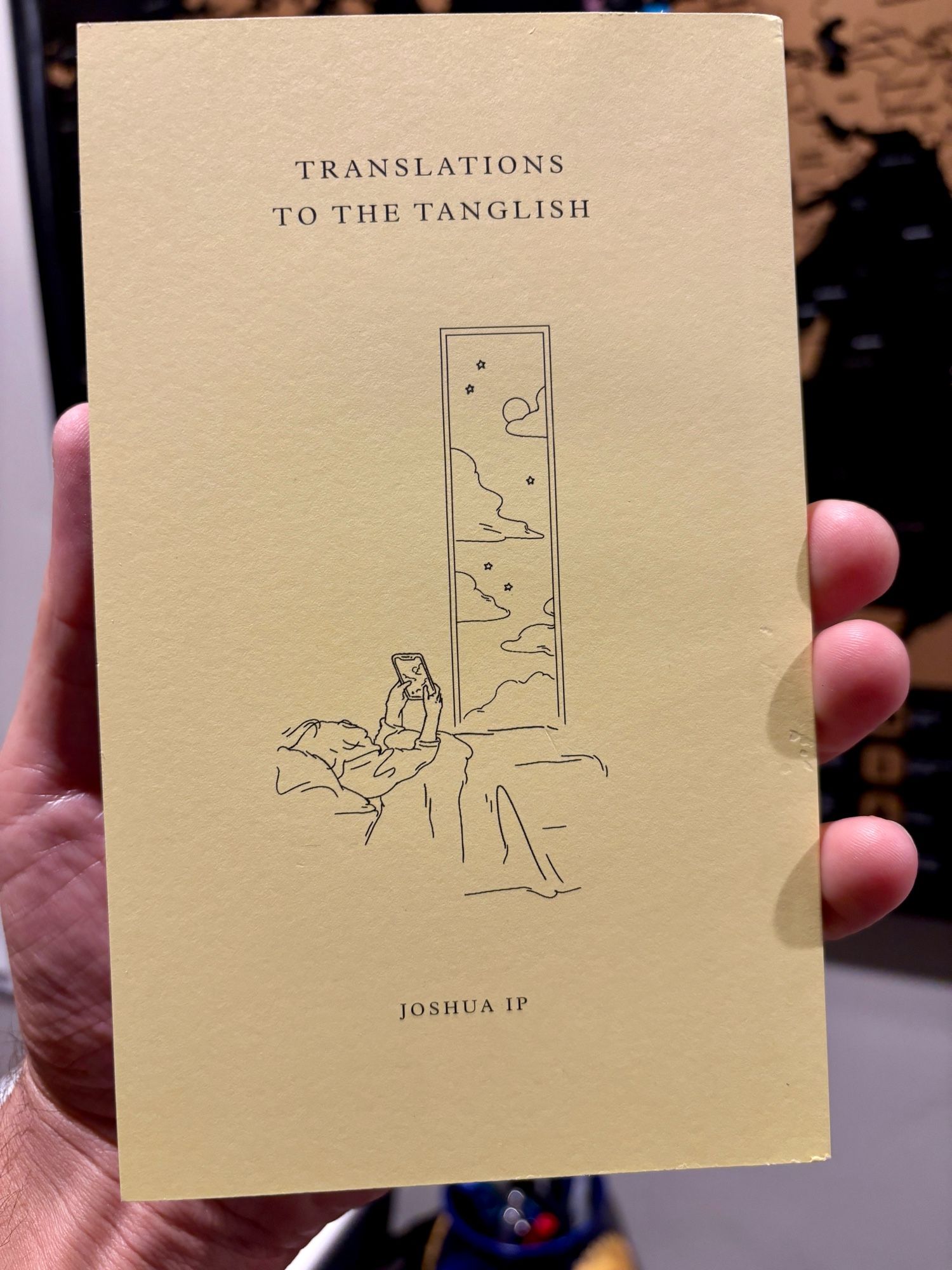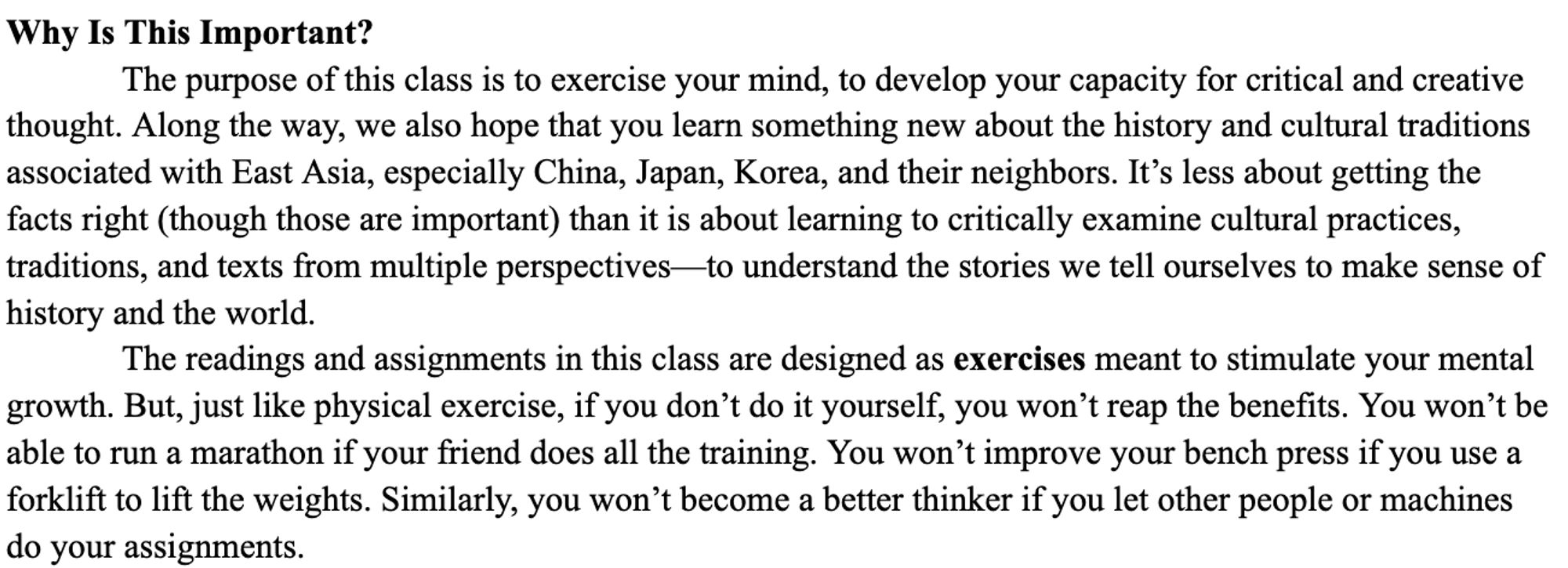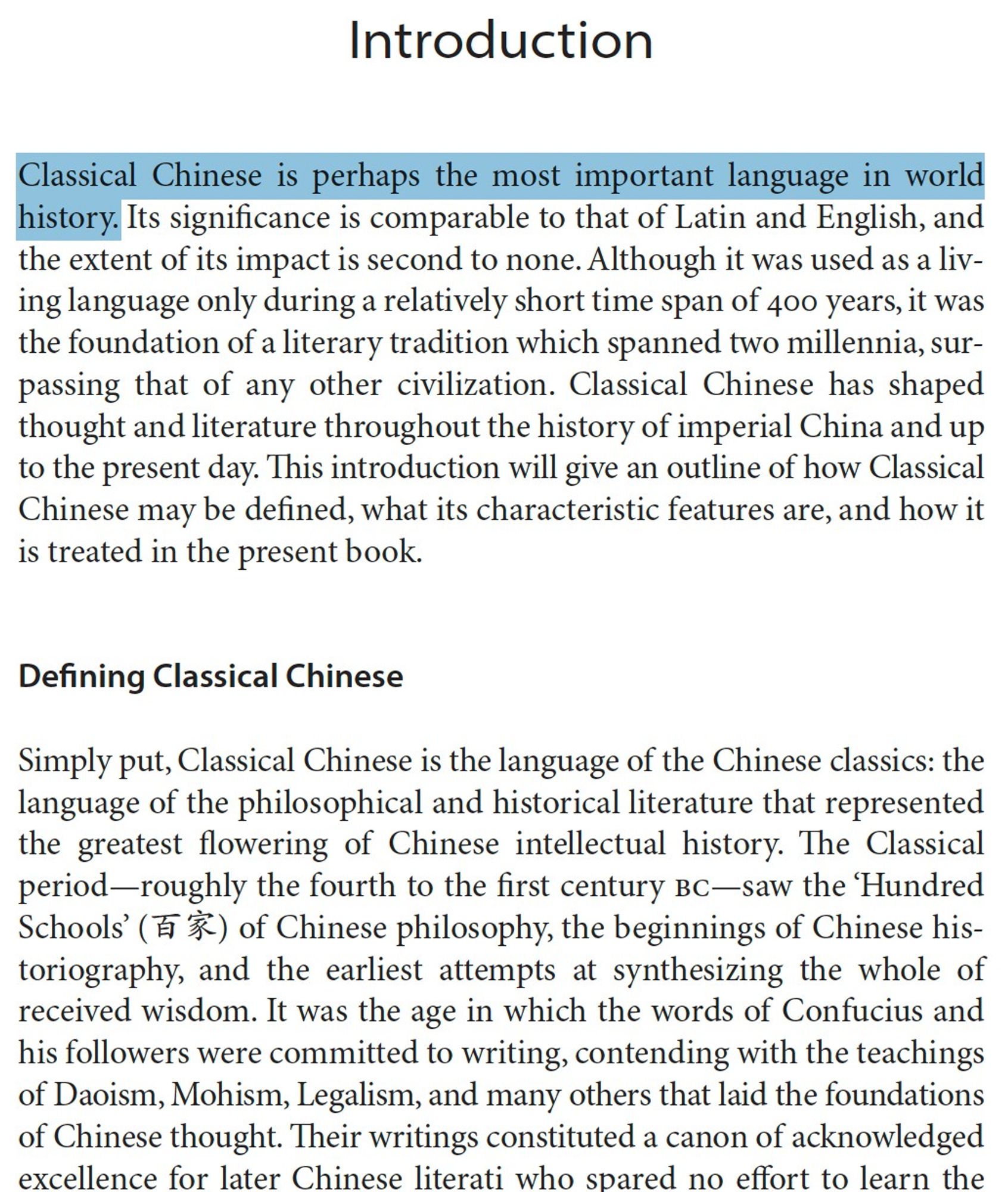I think it’s a little bit of both, honestly.
Latest in my collection of bizarre translations of Classical Chinese poetry. Joshua Ip’s “Translations to the Tanglish.” Opens with 10 pages of insulting blurbs, compares translation to turducken (“a crime against the natural order”), then offers “translations” with just a vague tie to the sources.


Creating a "Guide for Academic Honesty" for my big lecture class after talking with the TAs. Here's a few paragraphs of the part where I explain why it's important. Will it help? Or will the only students to read it be the ones who already would have been honest?

Creating a "Guide for Academic Honesty" for my big lecture class after talking with the TAs. Here's a few paragraphs of the part where I explain why it's important. Will it help? Or will the only students to read it be the ones who already would have been honest?

Right, I think it’s less “CC is more important than X,” more “people vastly underestimate the importance of CC.” I’d be surprised if Vogelsang is unaware of Sanskrit. Pollock is pretty widely read in sinological circles. I think CC, Skt, Latin, and C Arabic are probably comparable in their reach
Can someone convince my Dean of this (and fund me and my colleagues accordingly)?
Gearing up to start teaching Classical Chinese from a new textbook. The introduction's opening line is the best.


I mean, Drew Carey as the popular manifestation of Judith Butler, both of whom are anti-Belichick, would have me hooked.
Critical Cleveland studies is sorely needed (I’m also from NE Ohio).
This passage (along with most of the sutra fo 42 chapters) was absorbed into the compilation of daoist revelations called the Zhen'gao (from Bokenkamp's A Fourth-Century Daoist Family, pg 161) This is not entirely incongruous. in other parts of the zhen'gao, the daoist gods repeatedly...